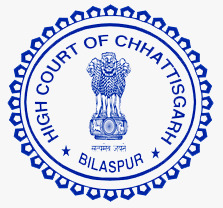History
Dantewada District, also known as Dantewara District or Dakshin Bastar District (South Bastar District), is a district in the Indian State of Chaattisgarh Dantewada is the district headquarters. The district is part of Bastar Division. Until 1998, the Dantewada District was a tehsil of the larger Bastar District . Dantewada District has an area of 10,238.99 km². It is bounded on the north and northeast by Bastar District, on the east by Malkangiri District of Orissa state, on the south and southwest by Khammam District of Andhra Pradesh state, and on the west by the Indravati River, which forms the boundary with Karimnagar District of Andhra Pradesh and Gadchiroli District of Maharashtra . The district has a population of 719,065 (2001 census), of which 476,945 (66%) are tribal peoples (Adivasis). The district is divided into 7 tehsils Dantewada , Gidam, Kuwakonda , Katekalyan , Chhindgarh , Sukma and Konta .
Before Indian Independence, the district was part of the princely state of Bastar . After Indian Independence in 1947, Bastar’s ruler acceded to the government of India, and the erstwhile state became part of Bastar District of Madhya Pradesh state. Bastar District was divided into the districts of Bastar, Dantewada, and Kankesr 1999. In 2000, Dantewada was one of the 16 Madhya Pradesh districts that constituted the new state of Chhattisgarh . Dantewada has further been bifurcated in the year 2007 resulting into a new district Bijapur with 4 Tehsils namely Bijapur, Bhairamgarh, Usoor & Bhopalpatnam.
The District Courts in every district and outlying courts in some of Tehsil Headquarters in the State of Chhattisgarh are established by the State Government in consultation with the High Court, taking into account the number of cases, topography of the place and population distribution in the district. There are three tier systems of courts functioning at the district level. These district courts at various levels administer justice in Chhattisgarh under administrative and supervisory control of the High Court of the State.
The District Court or Additional District court exercises jurisdiction both on original and appellate side in civil and criminal matters arising in the District. The territorial and pecuniary jurisdiction in civil matters is usually set in concerned state enactments on the subject of civil courts. On the criminal side jurisdiction is almost exclusively derived from code of criminal procedure. This code sets the maximum sentence which a district court may award which currently is capital punishment.
The court exercises appellate jurisdiction over all subordinate courts in the district on both civil and criminal matters. These subordinate courts usually consist of a Junior Civil Judge court, Principal Junior civil Judge court, Senior civil judge court (often called sub court)in the order of ascendancy on the civil side and the Judicial Magistrate Court of IInd Class, Judicial Magistrate Court of Ist class, Chief Judicial Magistrate Court in the order of ascendancy on the criminal side. Certain matters on criminal or civil side cannot be tried by a court inferior in jurisdiction to a district court if the particular enactment makes a provision to the effect. This gives the District Court original jurisdiction in such matters. Appeals from the district courts lie to the High court of the concerned state.
Chhattisgarh is a state in central India, formed when the sixteen Chhattisgarhi-speaking southeastern districts of Madhya Pradesh gained statehood on 1st November, 2000. It is a young state but an ancient land, referred to as “Dakshin Kosala”. Chhattisgarh is a state born out of 36 princely states (‘Chhattis’ is thirty-six and ‘Garh’ is Fort), thus leaving behind a legacy of picturesque palaces and forts. The state also has a rich cultural heritage. It has its own dance styles, cuisines and music. A third of the state’s population comprises of the local aborigines.
Chhattisgarh has a rich heritage of a robust culture. It has a treasure of enriched festivals, music, cuisines and lifestyles. The harmonization of eastern and western art as a result of the British imperialism has added an articulation to the rich ethnicity and culture of Chhattisgarh. The appeal of the region’s scenic beauty attracts tourists from all over India. The green forests, scenic hills, meandering rivers, beautiful villages of tribal folks are notable features of the region, thus making it an ideal abode of eco-tourism. Being the birth place of kingdoms of royal dynasties like the Mauryas, it is the ideal place for the historians and sociologists to explore. It is a place of marvelous temples and architectural wonders and offers an eloquent diction to the rich culture of Chhattisgarh.
The economy of Chhattisgarh has rapidly grown in recent years. Chhattisgarh recorded a high GDP growth of 7.35% from 2004-05 to 2008-09. The state has both private and state owned industries, which contribute significantly to the state’s economy. With the recent surge in economic growth in our country, Chhattisgarh is a young state projecting a high potential for generating intense future employment in the sector of Information Technology.
Till 01 October 2003, the civil courts of Dantewada were under District and Sessions Court Bastar . Civil District court Dantewada came in to existence on 10.04.2004. Hon’ble Shri J. K. S. Rajput was the first time District & Sessions Judge of the district court Dantewada . The Foundation stone of new District and Sessions court building was laid by Hon’ble Chief Justice of High Court Chhattisgarh, Shri W. A. Shishak in presence , Hon’ble Justice Of Chhattisgarh High Court on 28 th December 2001. On 02 October 2003, the new court building was inaugurated by Shri Hon’ble K. H. N. Kuranga , Justice High Court Chhattisgarh. At Present Shri Vijay Kumar Hota is the District and Sessions Judge of the district court Dantewada .



